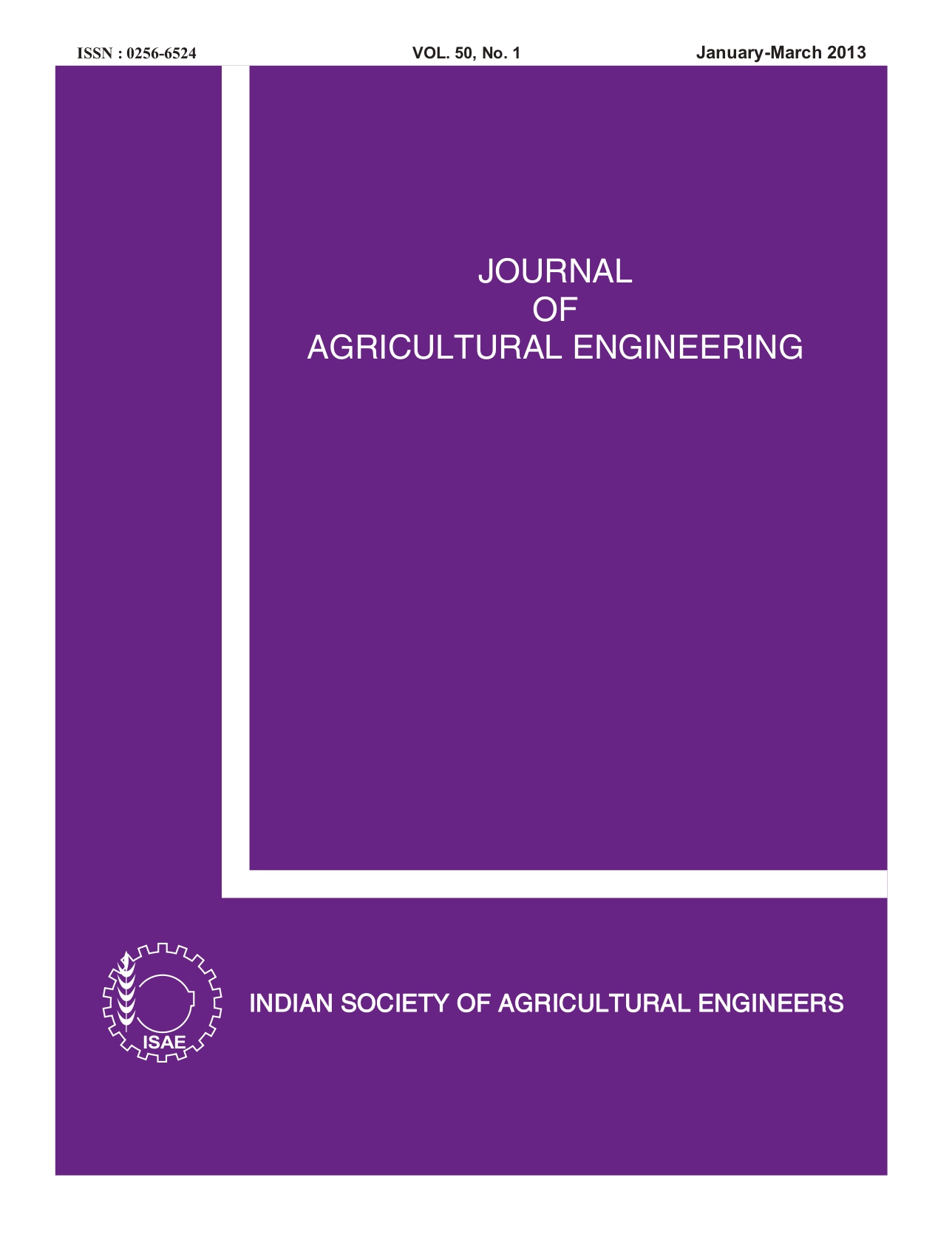Adequacy of Blanching on Quality Characteristics of Medicinal Indian Borage Leaves
DOI:
https://doi.org/10.52151/jae2013501.1505Keywords:
Indian borage, blanching, enzyme inactivation, therapeutic valueAbstract
Leaves of Indian borage (Coleus aromaticus) are rich in medicinal qualities, and need to be preserved immediately after harvest. Blanching is a prerequisite for preservation of green leafy vegetables. However, it may cause partial destruction of some active ingredients. The objective of the present study was to identify a suitable blanching treatment (hot water, chemical, microwave) and condition (temperature, time and power) for Coleus aromaticus leaves that ensures enzyme inactivation and maximum retention of therapeutic value (total phenolics and antioxidant properties) with desirable sensory properties (colour and shape). Retention of therapeutic value and sensory score was comparatively higher in microwave blanched sample over both hot water and chemically blanched samples. Blanching time of 80 s and 60 s was adequate for hot water and chemically blanched samples, respectively. Microwave blanching at 900,720,540,360 and 180 W power required 30,40,50,70,80 s, respectively, for complete inactivation of peroxidase. As the microwave power decreased, blanching time increased. However, the increase was significant at 360 and 180W power. Retention of total phenolics and antioxidant properties was better in samples blanched at 540W. From the sensory point of view, microwave blanching proved to be better than hot water and chemical blanching for flatness to the shape of dried leaves
References
Bos R; Hendriks H; Van Os F H L. 1983. The composition of the essential oil in the leaves of Coleus aromaticus Bentham and their importance as a component of the Species antiaphthosae Ph. Ned. Ed. V. Pharmacy World and Science, 5, 129-130.
Brewer M S; Begum S; Bozeman A. 1995.Microwave and conventional blanching methods on chemical, sensory and colour characteristics of frozen broccoli. J. Food Qual., 18, 479-493.
Eskilson P; Hellstrom G; Claesson J; Bolomberg T; Sanner B. 2000. Earth Energy Designer-EED version 2.0.
Gupta Sheetal; Laxmi Jyothi A; Prakash Jamuna. 2008. Effect of different blanching treatments on ascorbic acid retention in green leafy vegetables. Natural product Radiance, Department of studies in food Science and Nutrition, 7(2), 111-116.
Jayaprakasha G K; Jaganmohan Rao L; Sakariah K K. 2006. Antioxidant activities of curcumin,demethoxycurcumin and bisdemethoxycurcumin, Food Chemistry, 98(4), 720- 724.
Padma P R; Bhuvaneswari V; Chelvi S K. 1988. The activities of enzymic antioxidant in selected green leaves. Indian J. Nutr. Diet, 35, 1-3.
Pierto P; Pineda M; Aguilar M. 1999. Spectrophotometric quantification of antioxidant capacity through the formation of a phosphomolybdenum complex; specific application to the determination of vitamin E. Anal. Biochem., 269(2), 337-341.
Valera D; Rivas R; Avila J L. 2003. The essential oil of Coleus amboinicus Loureiro chemical composition and evaluation of insect anti-feedant effects. CIENCIA, 11(2), 113-118.
Vijaya Kumar S; Syed M A; Badami S; Anil T M; David Banji. 2008. Anti bacterial activity of aqueous extract of Coleus amboinicus. Pharmacology online Newsletter, 3,224- 226.
Warrier P K; Nambiar V P. 1995. Indian medicinal plants. Orient Longman Private Limited.














